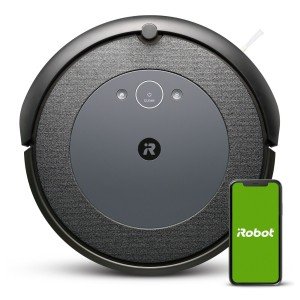Understanding Floor Robots: The Future of Home Cleaning
In the last few years, technological advancements have actually substantially changed the landscape of home cleaning. Among the most significant innovations is the floor robot, a device that has rapidly gotten popularity for its convenience and effectiveness. This short article aims to check out the various elements of floor robots, their performance, benefits, popular designs, and some regularly asked questions to help customers make notified choices.

What is a Floor Robot?
A floor robot, frequently described as a robotic vacuum, is an automated device created to browse floors and get rid of dirt, dust, and particles. Unlike traditional vacuum, floor robots operate autonomously, offering a problem-free cleaning experience. These smart devices use sensors, mapping innovations, and advanced algorithms to clean various surface areas, including hardwood, tile, and carpet.
How Do Floor Robots Work?
Floor robots run through a mix of software and hardware components. Here are the crucial functions that enable their performance:
1. Sensing units
- Challenge Detection: Floor robots have built-in sensing units that help them discover obstacles, enabling them to browse around furniture and avoid falls.
- Cliff Sensors: These avoid the robot from falling down stairs or ledges by acknowledging changes in elevation.
2. Navigation and Mapping
- Visual Mapping: Some innovative designs utilize electronic cameras and laser innovation to create in-depth maps of the cleaning location.
- Simultaneous Localization and Mapping (SLAM): This strategy assists the robot track its place and successfully prepare its cleaning route.
3. Cleaning Mechanisms
- Suction Power: Most robotic vacuums utilize a suction system to capture dirt and dust, which is then saved in an onboard dustbin.
- Brushing Systems: Many models come equipped with rotating brushes or mops for boosted cleaning abilities, especially on carpets or hard surface areas.
4. Smart Features
- Connection: Many floor robots support Wi-Fi connectivity, enabling users to manage them through smart device apps or smart home systems.
- Scheduling: Users can schedule cleaning times, guaranteeing their homes are tidy even when they're not there.
5. Self-governing Charging
- Self-Docking: Most robots immediately go back to their charging station once their battery runs low, ensuring they're constantly all set to tidy.
Advantages of Using a Floor Robot
The adoption of floor robots comes with many benefits that make them attracting users:
1. Convenience
Floor robots can clean up while users address other tasks, enabling multitasking and time-saving.
2. Increased Efficiency
Robotic vacuums typically cover more ground in less time compared to traditional approaches, thanks to their systematic cleaning patterns.
3. Constant Cleaning Routine
Users can arrange routine cleansings, ensuring that their homes stay tidy without requiring everyday intervention.
4. Accessibility
Robotic vacuums can quickly access hard-to-reach locations, such as under furnishings or in tight spaces.
5. Advanced Features
Many designs come geared up with features like voice control and app combination, boosting use and availability.
Popular Floor Robots
When thinking about a floor robot, different brands and designs cater to different needs and budgets. Here's a brief introduction of some leading alternatives:
| Brand | Design | Secret Features | Price Range |
|---|---|---|---|
| iRobot | Roomba i7+ | Smart mapping, self-emptying dock | ₤ 600 - ₤ 800 |
| Roborock | Roborock S7 | Sonic mopping, challenge avoidance | ₤ 500 - ₤ 700 |
| Neato | Neato D7 | D-shape design, advanced suction | ₤ 600 - ₤ 800 |
| Ecovacs | Ecovacs Deebot T8 | Mopping function, advanced mapping | ₤ 600 - ₤ 800 |
| Shark | Shark IQ Robot | Self-emptying base, home mapping | ₤ 400 - ₤ 600 |
(Note: Prices may vary based on sellers and ongoing promos.)
Regularly Asked Questions (FAQs)
1. Are floor robots reliable on carpets?
Yes, many modern floor robots are developed to tidy numerous surfaces, including carpets. Models with strong suction and turning brushes are especially reliable at getting pet hair and ground-in dirt.
2. How frequently should I run my floor robot?
This depends on your household's needs. For homes with animals or high foot traffic, day-to-day or every other day cleaning might be helpful. For quieter families, running the robot as soon as a week may be enough.
3. Can I control my floor robot remotely?
Lots of floor robots include smart device apps that enable users to control their devices from another location, schedule cleanings, and display performance.
4. Do I require to clear the dustbin regularly?
The majority of robots need routine emptying of the dustbin, particularly in homes with pets or heavy soil. However, some designs provide self-emptying capabilities, which minimize user involvement.
5. Are floor robots suitable for all kinds of flooring?
Many floor robots are effective on different surface areas, consisting of wood, tile, and low-pile carpets. Nevertheless, some might perform much better on particular surfaces, so it's important to choose a model fit to your home's needs.
As households continue to accept technology, floor robots have actually become essential cleaning buddies, providing convenience, performance, and advanced functions. Comprehending their performances, benefits, and available designs allows consumers to pick the ideal floor robot to satisfy their particular cleaning needs. By purchasing this innovative innovation, homeowners can ensure their home stay clean and comfortable with very little effort.

